What is Lemon Rice
This is one of the most popular and commonly made rice recipes from the South Indian cuisine. I have had lemon rice in many restaurants and even in a few South Indian temples. Easy to make, my lemon rice recipe includes a mixture of fried mustard seeds, urad dal (black gram), chilies (hot green peppers), herbs and spices. This fried tempering mixture is then poured over steamed rice. Fried peanuts and cashews are added, along with lemon juice, and everything is mixed together. You can make chitranna with freshly cooked rice or even with leftover rice. The peanuts and cashews add crunch to this tangy and fragrant chitranna recipe. I prefer to fully cook the rice. You can cook rice grains al dente if you prefer that texture. Apart from Fried Rice, Pulao or Biryani, in all other rice recipes, I prefer to cook rice grains fully. For the rice you can choose to use any variety of non-sticky rice that you prefer or is a staple in your kitchen. Long grained fragrant rice like Basmati rice also work well in the recipe.
How to make Lemon Rice
Cook Rice
- First rinse 1 cup heaped rice a couple of times and then soak in enough water for about 20 to 30 minutes. You can use short grained rice or a long grained rice like basmati. In my step-by-step photo guide, I have added short grained rice. In the video, basmati rice is used.
- Then drain all the water from the soaked rice. Add rice in a 2-litre or 3-litre stovetop pressure cooker. Add ¼ teaspoon salt or add salt as required.
- Add 1.75 to 2 cups water.
- Pressure cook rice for 8 to 10 minutes or for 2 to 3 whistles on a medium to medium-high heat. When the pressure settles down on its own in the cooker, then only open the lid. You can even cook rice in a pan or in the Instant Pot. Follow the steps as listed below:
Pan method: Take rice, salt and 2 cups water in a pan. Cover and simmer until all the water has been absorbed and rice grains are tender and fluffy. Check when the rice is simmering and if the water has dried up with rice grains undercooked, add some more hot water and continue to cook. Instant Pot method: Add rice, salt and 1 or 1.25 cups water (depending on rice type and quality) in the steel insert of a 6 quart IP. Pressure cook for 5 minutes on high. Do a quick pressure release after 5 minutes.
5. Empty the cooked rice in a bowl or plate and set aside so that it becomes warm or cool at room temperature. You can also fluff the cooked rice and let it cool in the cooker itself. 1 heaped cup of raw rice will yield 3 to 4 cups of cooked rice. However, this can very depending on the type of rice. 6. Squeeze juice from 1 lime or 1 small lemon into a small bowl. You will need about 1.5 to 2 tablespoons lime or lemon juice. If you want a more tangy taste, then you can add more lemon juice. Set aside.
Fry Nuts
- Heat 2 tablespoons sesame oil in a pan. Add ¼ cup peanuts. The sesame oil that is added is made from raw sesame seeds and is also known as gingelly oil. It has a totally different flavor and aroma than the south-asian toasted sesame oil. If you do not have sesame oil, then add sunflower oil, canola oil, avocado oil, peanut oil or grapeseed oil. If you have roasted peanuts ready, then you can give a miss to this step. I sometimes have extra roasted peanuts in the pantry to be had as a snack or to be added in recipes like these.
- Fry the peanuts on a low to medium heat until they become golden and crunchy. 9. Remove and set aside. 10. In the same pan add 1 tablespoon cashews.
- Fry cashews until they turn golden. Set aside.
Fry Lentils, Seeds, Spices
- Now add 1 tablespoon sesame oil in the same pan. When the oil becomes hot, lower the heat and add 1 teaspoon mustard seeds.
- When the mustard seeds begun to crackle, then add 1 teaspoon urad dal (spilt and skinned black gram). I don’t add chana dal (split and skinned bengal gram) to my lemon rice recipe, but if you want to add these, soak the lentils in hot water for 20 to 30 minutes. Drain the water and then add them to the oil at this step. Make sure they are pat dried or the extra water or moisture in them will make the oil splutter too much.
- On a low heat, fry the urad dal till they turn golden.
- Next add 12 to 15 curry leaves, 1 teaspoon chopped green chillies and 2 dry red chilies (preferably seeds removed).
- Sauté for some seconds until the red chilies change color.
- Switch off the heat and add ½ teaspoon turmeric powder and 1 generous pinch asafetida (hing).
- Mix very well.
Make Lemon Rice
- Now pour this tempering mixture in the cooked rice.
- Add the fried peanuts and cashews.
- Add lemon juice – about 1.5 to 2 tablespoons.
- Add salt as required.
- Mix very well.
- Check the taste and add more lemon juice or salt if you like. Keep the lemon rice or chitranna covered for the flavors to blend for 4 to 5 minutes. While serving garnish with some chopped coriander leaves (cilantro) if you prefer.
- Serve lemon rice with papaddums or vadams and coconut chutney or just have it plain. You can even pack lemon rice in tiffin or for a travel journey.
Serving Suggestions
Serve chitranna with pappadums or with a side vegetable salad or even Coconut Chutney also goes great with this dish. It can also be made as a tiffin box. As lemon rice can be served at room temperature, it also makes a great picnic lunch item. It’s a light dish and you can have it as a light lunch or breakfast also.
Make Ahead & Storing
If you have any leftovers then store in the refrigerator for a day. Leftover rice is not good for health and may not suit some people health-wise. So I suggest to finish the lemon rice in a day. For this reason I also suggest not to make a large batch of lemon rice to freeze or refrigerate.
Expert Tips
Rice: Any non-sticky variety of rice grains can be used in lemon rice recipe. This means you can use short-grained rice or even long grained rice like basmati. Soaking rice: For any rice recipes, I always suggest to soak rice. It helps in cooking rice faster and the rice grains cook beautifully. If you do not soak rice, then increase the cooking time and add a bit more water. Overcooked rice: If in case you overcook rice and they become lumpy, then do not worry. Simply break the lumps when the cooked rice is cooled. Leftover rice: Some hours old or a day old leftover rice works excellently in the recipe. Add about 3 to 4 cups of leftover cooked rice.Spices and lentils: Spices like mustard seeds and either dry red chillies or green chillies are absolutely needed in chitranna recipe. You can still let go of urad dal and asafoetida (hing) if they are not available to you.Herbs: Curry leaves add a unique aroma. If you find it difficult to procure them, then you can skip them. Though I have not added coriander leaves (cilantro), you can add them. About 1 teaspoon of finely chopped ginger also adds a good flavor to the chitranna recipe. Nuts: Both cashews and peanuts add a lot of texture and crunch in lemon rice. You can also just use one type of nut. Do not use nuts like almonds, pecans, walnuts etc as the authenticity of the recipe will be lost. Lemons: Use lemons which are ripe and fresh. You can also use limes. Fats: The fat used to make lemon rice is oil. The oil that is traditionally used is sesame oil made from wood pressed raw sesame seeds. This sesame oil is also called as gingelly oil and is very different from the south-asian toasted sesame oil. Sesame oil adds a great deal of nutty flavor. If you do not have sesame oil, then simply use sunflower oil, peanut oil, avocado oil, grapeseed oil or any neutral oil. Gluten-free version: Skip adding the asafoetida or use a gluten-free asafoetida in the recipe.
Please be sure to rate the recipe in the recipe card or leave a comment below if you have made it. For more vegetarian inspirations, Sign Up for my emails or follow me on Instagram, Youtube, Facebook, Pinterest or Twitter. Tomato Rice Recipe | Quick Thakkali Sadam Ghee Rice (Easy One Pot Recipe) Curd Rice Recipe | Daddojanam | Thayir Sadam Bisi Bele Bath Recipe (Karnataka Style) This Lemon Rice post from the archives first published in August 2013 has been republished and updated on November 2022.

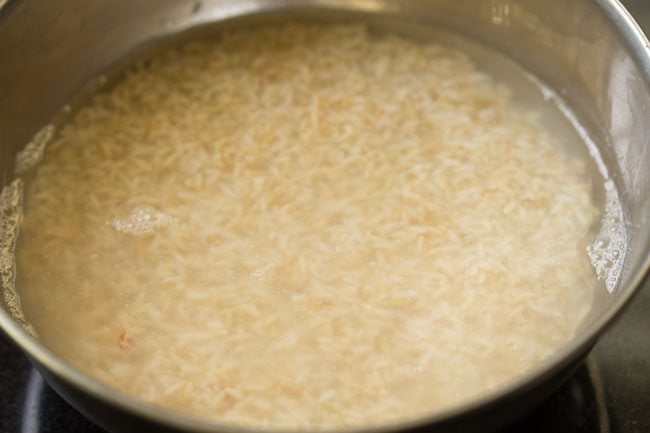
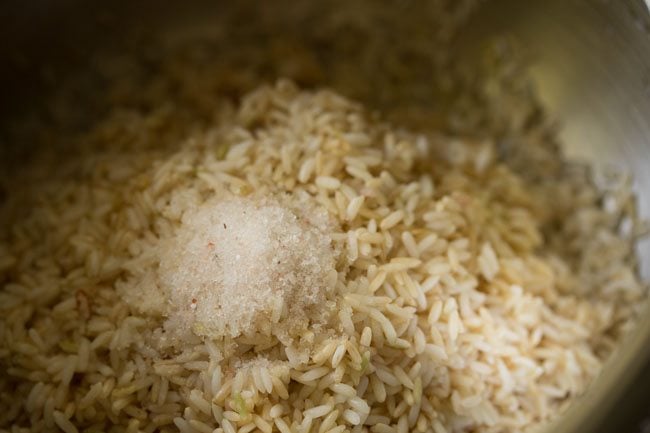
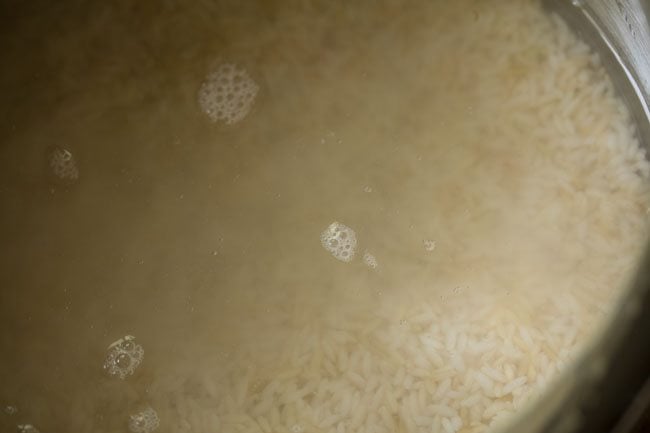
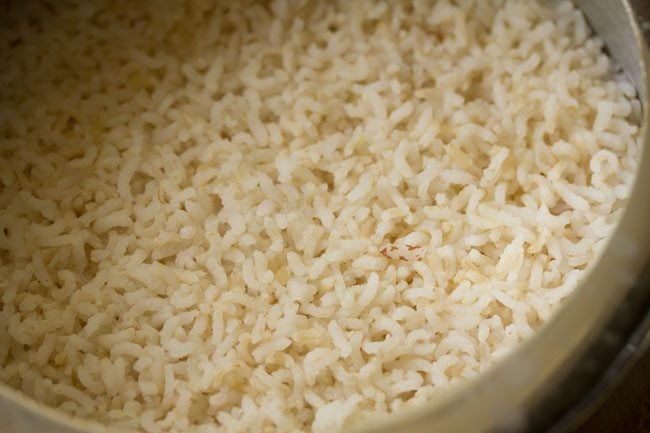
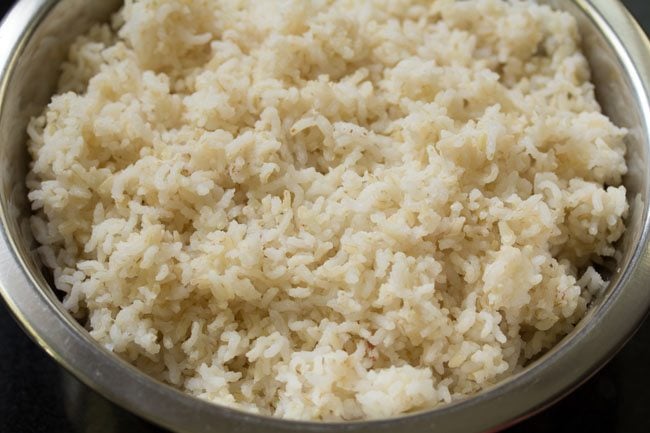
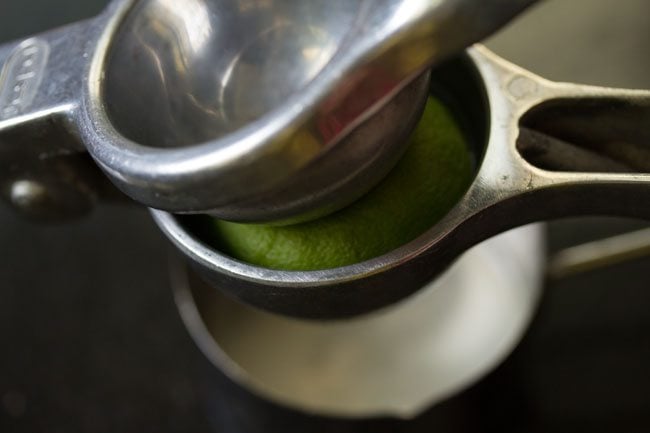
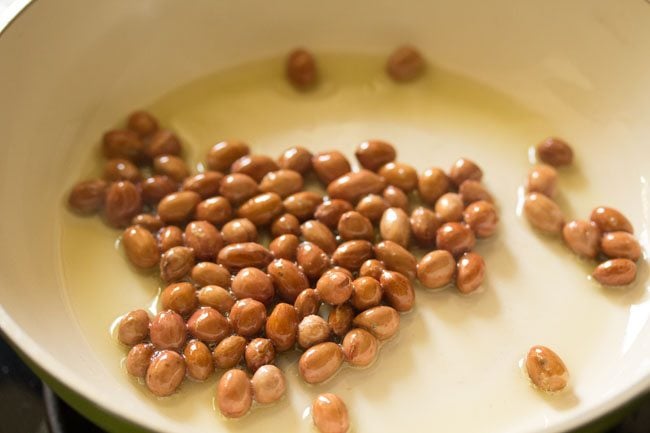
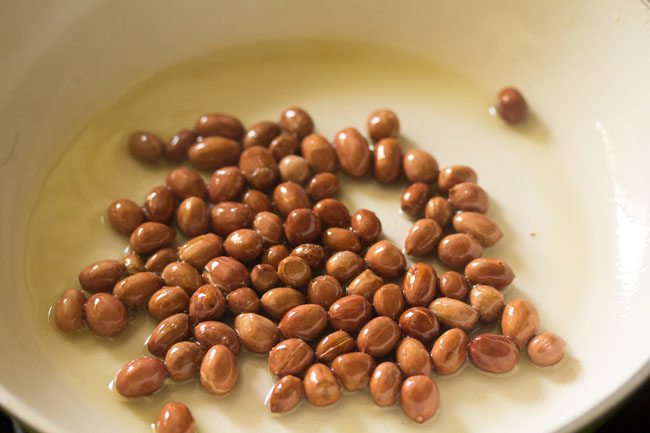
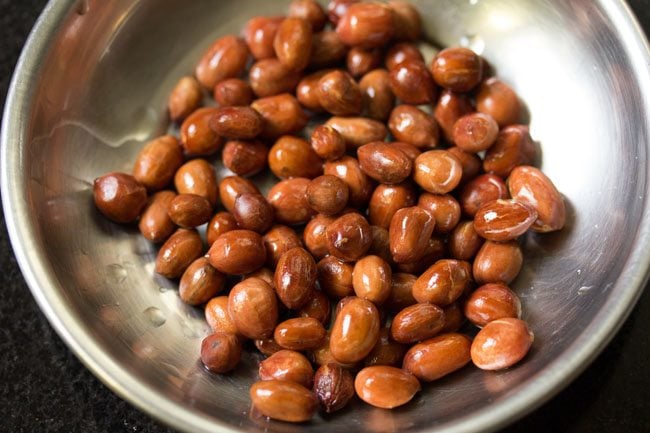
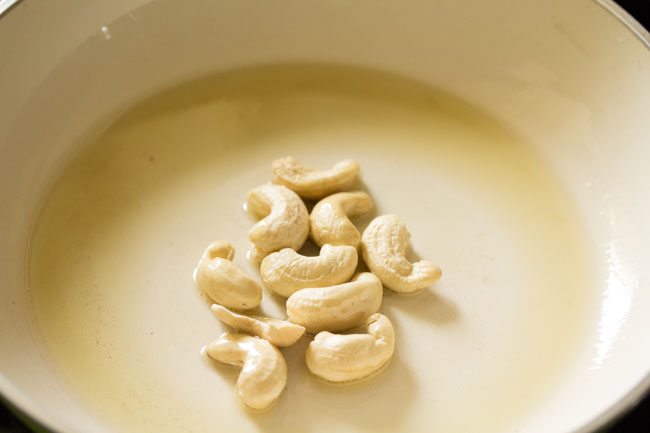
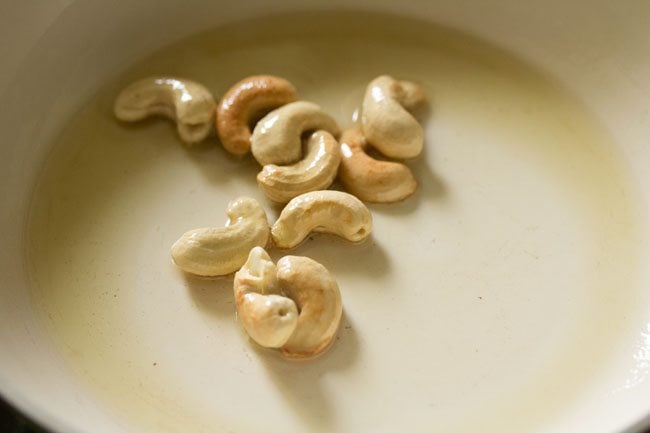

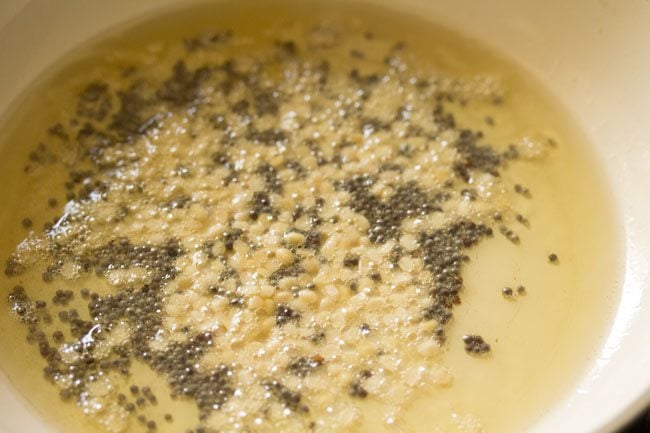
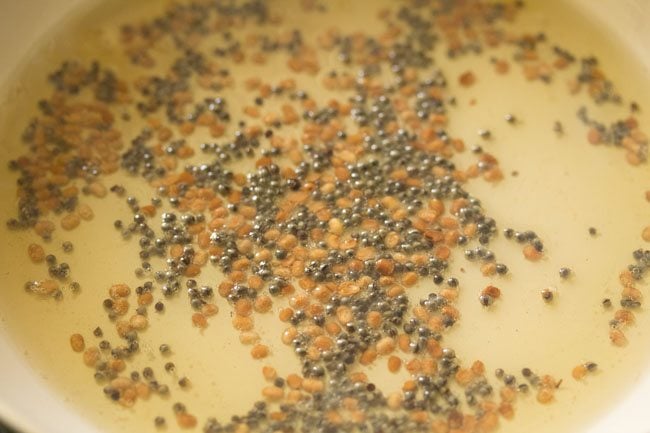

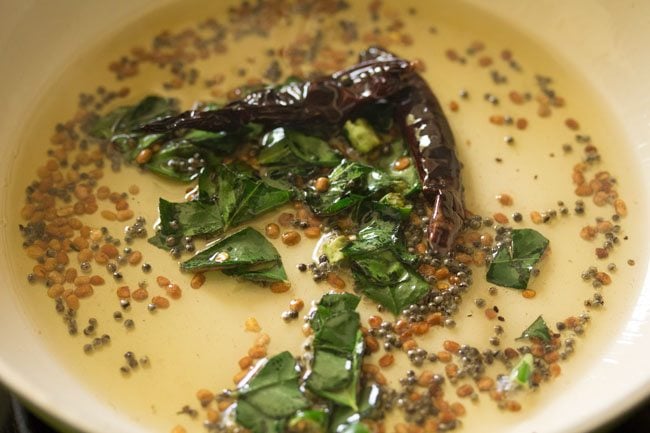
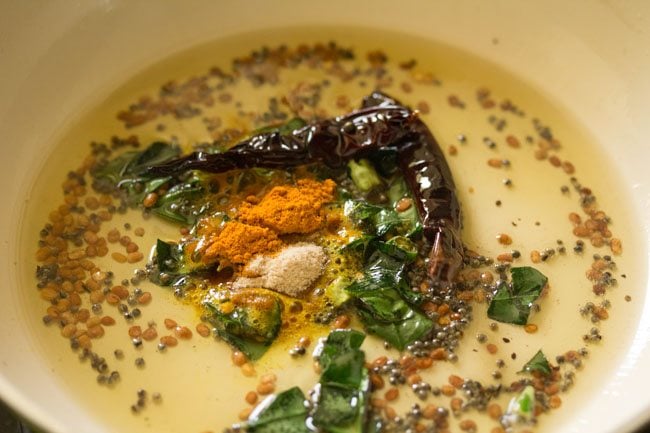
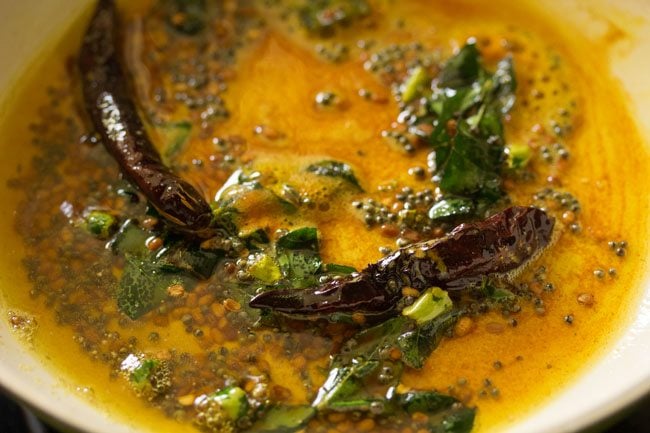
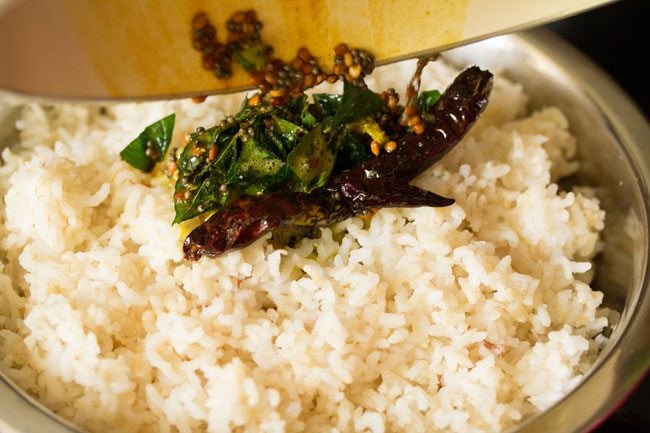
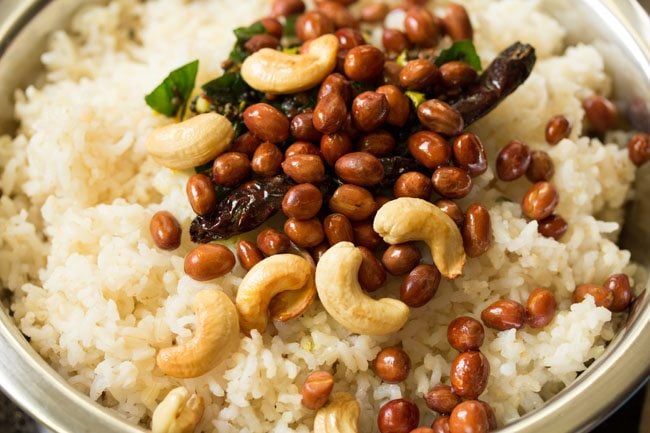
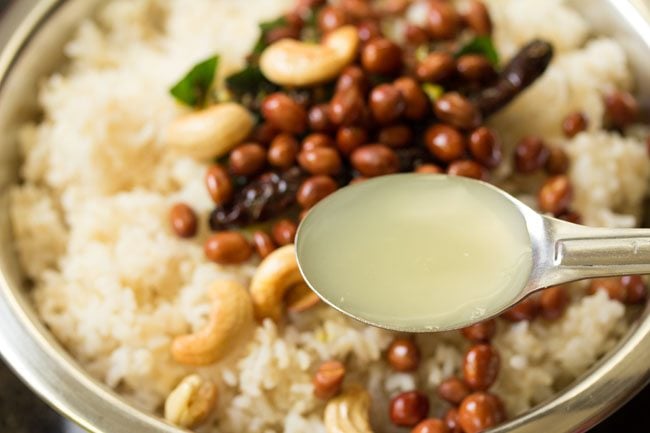
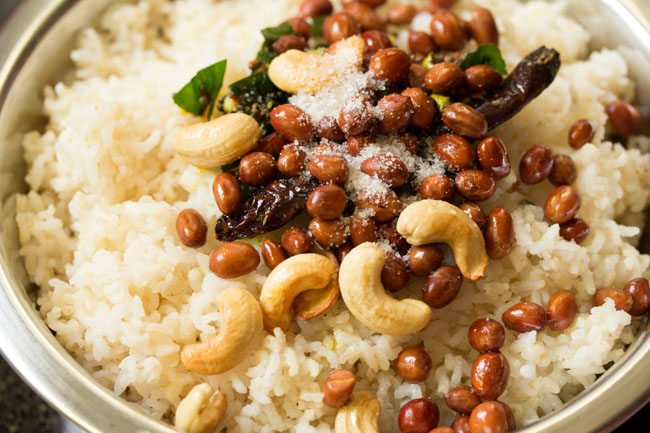
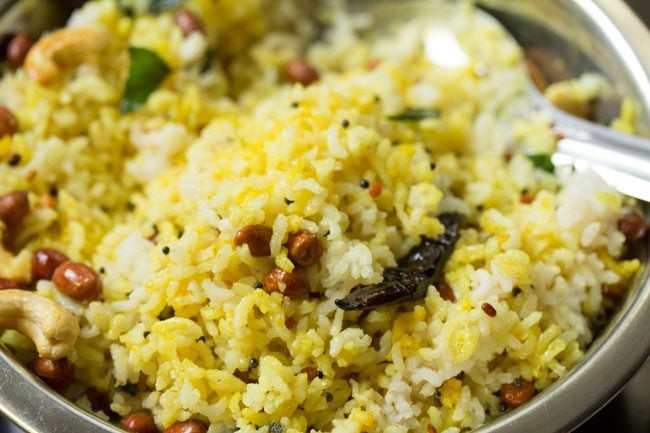
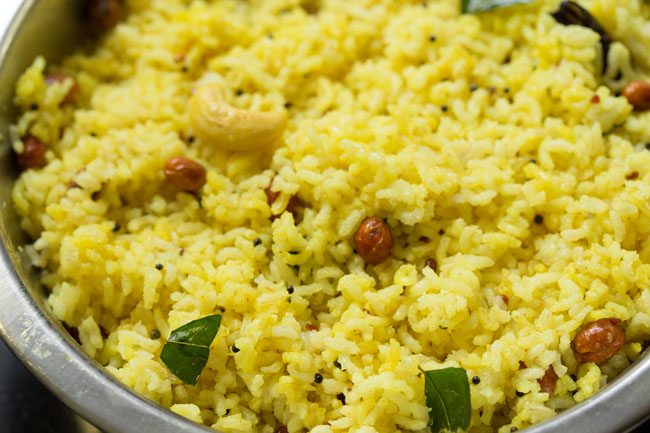
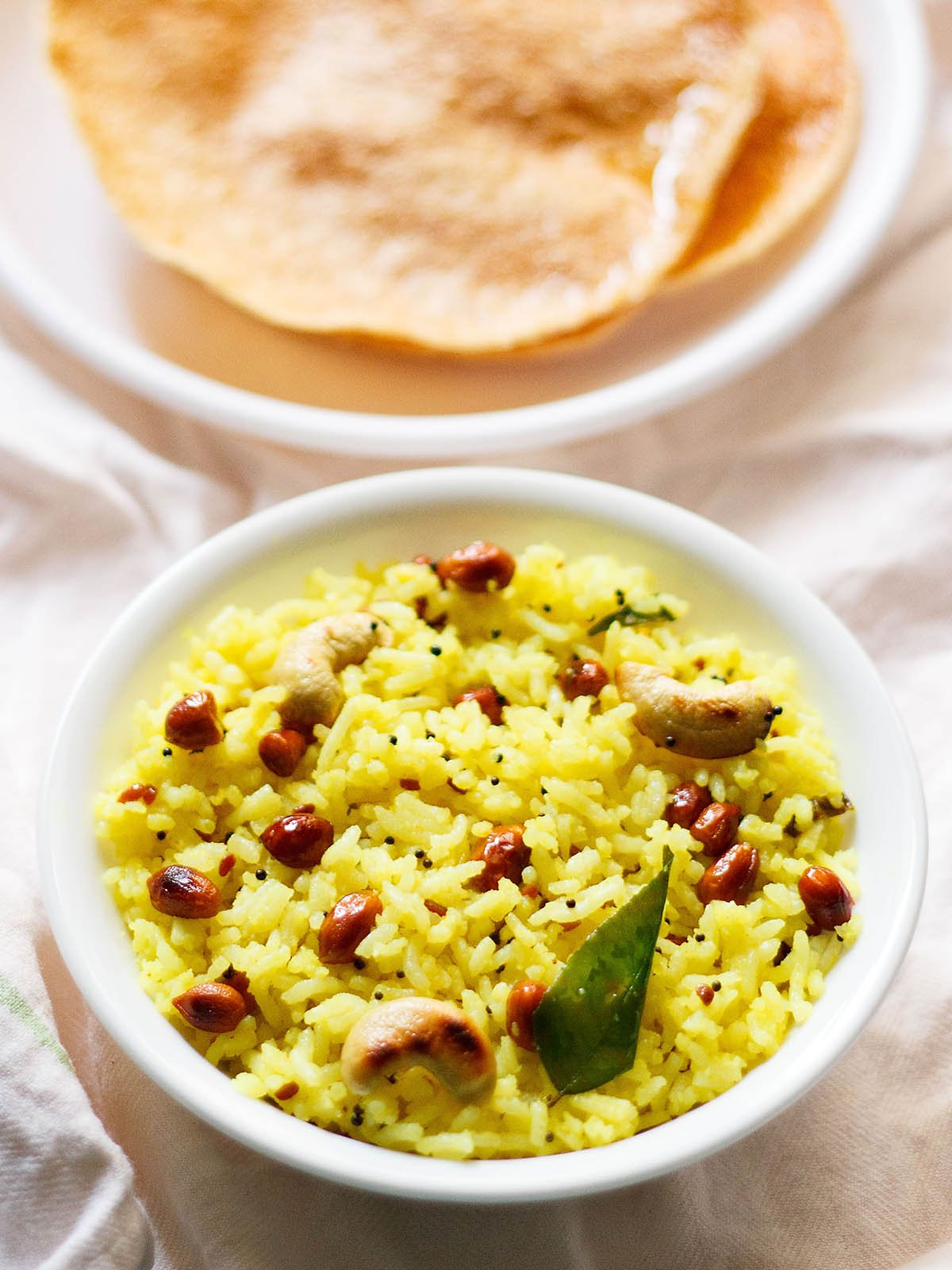
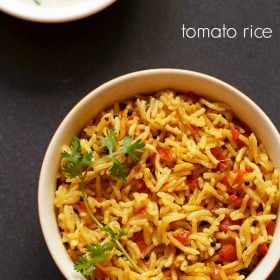

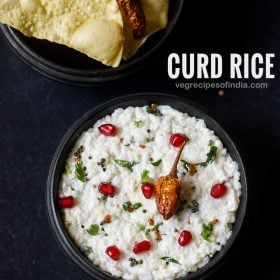
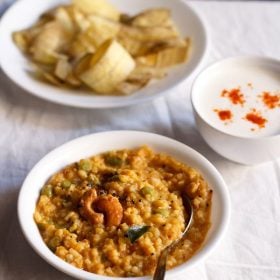

title: “Lemon Rice Tangy Flavorful Rice " ShowToc: true date: “2024-09-25” author: “Odessa Kistner”
What is Lemon Rice
This is one of the most popular and commonly made rice recipes from the South Indian cuisine. I have had lemon rice in many restaurants and even in a few South Indian temples. Easy to make, my lemon rice recipe includes a mixture of fried mustard seeds, urad dal (black gram), chilies (hot green peppers), herbs and spices. This fried tempering mixture is then poured over steamed rice. Fried peanuts and cashews are added, along with lemon juice, and everything is mixed together. You can make chitranna with freshly cooked rice or even with leftover rice. The peanuts and cashews add crunch to this tangy and fragrant chitranna recipe. I prefer to fully cook the rice. You can cook rice grains al dente if you prefer that texture. Apart from Fried Rice, Pulao or Biryani, in all other rice recipes, I prefer to cook rice grains fully. For the rice you can choose to use any variety of non-sticky rice that you prefer or is a staple in your kitchen. Long grained fragrant rice like Basmati rice also work well in the recipe.
How to make Lemon Rice
Cook Rice
- First rinse 1 cup heaped rice a couple of times and then soak in enough water for about 20 to 30 minutes. You can use short grained rice or a long grained rice like basmati. In my step-by-step photo guide, I have added short grained rice. In the video, basmati rice is used.
- Then drain all the water from the soaked rice. Add rice in a 2-litre or 3-litre stovetop pressure cooker. Add ¼ teaspoon salt or add salt as required.
- Add 1.75 to 2 cups water.
- Pressure cook rice for 8 to 10 minutes or for 2 to 3 whistles on a medium to medium-high heat. When the pressure settles down on its own in the cooker, then only open the lid. You can even cook rice in a pan or in the Instant Pot. Follow the steps as listed below:
Pan method: Take rice, salt and 2 cups water in a pan. Cover and simmer until all the water has been absorbed and rice grains are tender and fluffy. Check when the rice is simmering and if the water has dried up with rice grains undercooked, add some more hot water and continue to cook. Instant Pot method: Add rice, salt and 1 or 1.25 cups water (depending on rice type and quality) in the steel insert of a 6 quart IP. Pressure cook for 5 minutes on high. Do a quick pressure release after 5 minutes.
5. Empty the cooked rice in a bowl or plate and set aside so that it becomes warm or cool at room temperature. You can also fluff the cooked rice and let it cool in the cooker itself. 1 heaped cup of raw rice will yield 3 to 4 cups of cooked rice. However, this can very depending on the type of rice. 6. Squeeze juice from 1 lime or 1 small lemon into a small bowl. You will need about 1.5 to 2 tablespoons lime or lemon juice. If you want a more tangy taste, then you can add more lemon juice. Set aside.
Fry Nuts
- Heat 2 tablespoons sesame oil in a pan. Add ¼ cup peanuts. The sesame oil that is added is made from raw sesame seeds and is also known as gingelly oil. It has a totally different flavor and aroma than the south-asian toasted sesame oil. If you do not have sesame oil, then add sunflower oil, canola oil, avocado oil, peanut oil or grapeseed oil. If you have roasted peanuts ready, then you can give a miss to this step. I sometimes have extra roasted peanuts in the pantry to be had as a snack or to be added in recipes like these.
- Fry the peanuts on a low to medium heat until they become golden and crunchy. 9. Remove and set aside. 10. In the same pan add 1 tablespoon cashews.
- Fry cashews until they turn golden. Set aside.
Fry Lentils, Seeds, Spices
- Now add 1 tablespoon sesame oil in the same pan. When the oil becomes hot, lower the heat and add 1 teaspoon mustard seeds.
- When the mustard seeds begun to crackle, then add 1 teaspoon urad dal (spilt and skinned black gram). I don’t add chana dal (split and skinned bengal gram) to my lemon rice recipe, but if you want to add these, soak the lentils in hot water for 20 to 30 minutes. Drain the water and then add them to the oil at this step. Make sure they are pat dried or the extra water or moisture in them will make the oil splutter too much.
- On a low heat, fry the urad dal till they turn golden.
- Next add 12 to 15 curry leaves, 1 teaspoon chopped green chillies and 2 dry red chilies (preferably seeds removed).
- Sauté for some seconds until the red chilies change color.
- Switch off the heat and add ½ teaspoon turmeric powder and 1 generous pinch asafetida (hing).
- Mix very well.
Make Lemon Rice
- Now pour this tempering mixture in the cooked rice.
- Add the fried peanuts and cashews.
- Add lemon juice – about 1.5 to 2 tablespoons.
- Add salt as required.
- Mix very well.
- Check the taste and add more lemon juice or salt if you like. Keep the lemon rice or chitranna covered for the flavors to blend for 4 to 5 minutes. While serving garnish with some chopped coriander leaves (cilantro) if you prefer.
- Serve lemon rice with papaddums or vadams and coconut chutney or just have it plain. You can even pack lemon rice in tiffin or for a travel journey.
Serving Suggestions
Serve chitranna with pappadums or with a side vegetable salad or even Coconut Chutney also goes great with this dish. It can also be made as a tiffin box. As lemon rice can be served at room temperature, it also makes a great picnic lunch item. It’s a light dish and you can have it as a light lunch or breakfast also.
Make Ahead & Storing
If you have any leftovers then store in the refrigerator for a day. Leftover rice is not good for health and may not suit some people health-wise. So I suggest to finish the lemon rice in a day. For this reason I also suggest not to make a large batch of lemon rice to freeze or refrigerate.
Expert Tips
Rice: Any non-sticky variety of rice grains can be used in lemon rice recipe. This means you can use short-grained rice or even long grained rice like basmati. Soaking rice: For any rice recipes, I always suggest to soak rice. It helps in cooking rice faster and the rice grains cook beautifully. If you do not soak rice, then increase the cooking time and add a bit more water. Overcooked rice: If in case you overcook rice and they become lumpy, then do not worry. Simply break the lumps when the cooked rice is cooled. Leftover rice: Some hours old or a day old leftover rice works excellently in the recipe. Add about 3 to 4 cups of leftover cooked rice.Spices and lentils: Spices like mustard seeds and either dry red chillies or green chillies are absolutely needed in chitranna recipe. You can still let go of urad dal and asafoetida (hing) if they are not available to you.Herbs: Curry leaves add a unique aroma. If you find it difficult to procure them, then you can skip them. Though I have not added coriander leaves (cilantro), you can add them. About 1 teaspoon of finely chopped ginger also adds a good flavor to the chitranna recipe. Nuts: Both cashews and peanuts add a lot of texture and crunch in lemon rice. You can also just use one type of nut. Do not use nuts like almonds, pecans, walnuts etc as the authenticity of the recipe will be lost. Lemons: Use lemons which are ripe and fresh. You can also use limes. Fats: The fat used to make lemon rice is oil. The oil that is traditionally used is sesame oil made from wood pressed raw sesame seeds. This sesame oil is also called as gingelly oil and is very different from the south-asian toasted sesame oil. Sesame oil adds a great deal of nutty flavor. If you do not have sesame oil, then simply use sunflower oil, peanut oil, avocado oil, grapeseed oil or any neutral oil. Gluten-free version: Skip adding the asafoetida or use a gluten-free asafoetida in the recipe.
Please be sure to rate the recipe in the recipe card or leave a comment below if you have made it. For more vegetarian inspirations, Sign Up for my emails or follow me on Instagram, Youtube, Facebook, Pinterest or Twitter. Tomato Rice Recipe | Quick Thakkali Sadam Ghee Rice (Easy One Pot Recipe) Curd Rice Recipe | Daddojanam | Thayir Sadam Bisi Bele Bath Recipe (Karnataka Style) This Lemon Rice post from the archives first published in August 2013 has been republished and updated on November 2022.






























